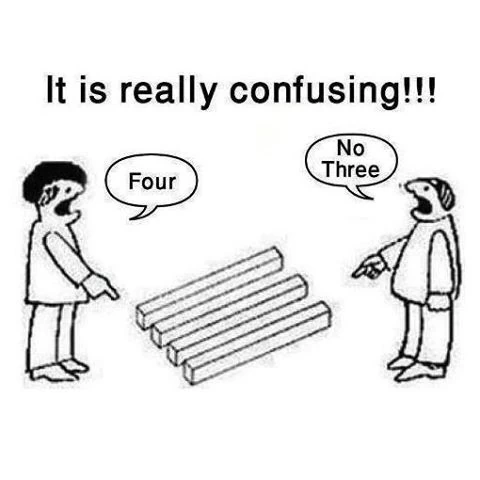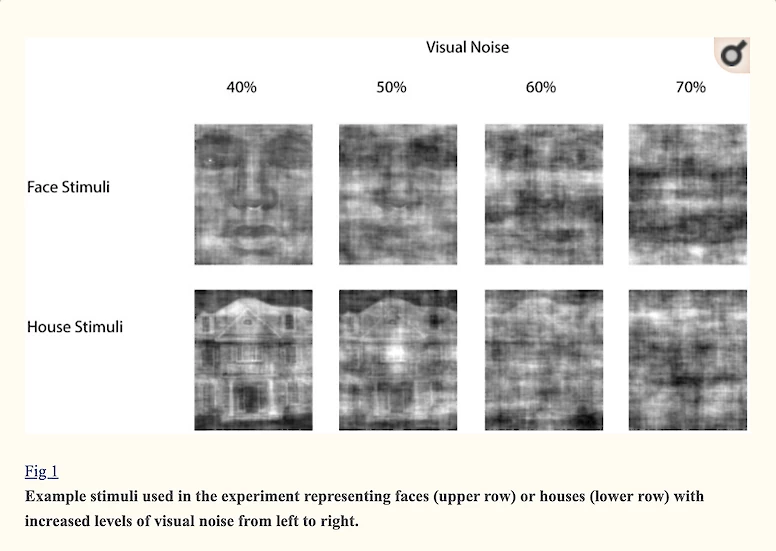

Perceptual Bias and the Paranormal
I have written a lot about cognitive bias and the different ways our belief systems influence the way we perceive the world. While I personally don't like the terms, people are often grouped into two categories when it comes to paranormal belief. It is skeptic and believer. You also have the in-between which is a skeptical believer. A believer is considered to be someone who believes in the paranormal. A skeptic is someone who does not. A skeptical believer is considered to be in between. While I am not a fan of these labels because I feel like we have evolved past them, I will use them for the sake of this article as they are categorized in a study that we will talk about later.
Perception VS Reality
Perception is how our brain translates the things that we see and feel. It is subject to our own interpretation of a situation. People often confuse perception with that of reality. Reality is things as they really are. Our belief systems, our education, our past experiences and just who we are as a person shape how we perceive things. When it comes to the paranormal field, beliefs have a massive influence on how we perceive a situation. For example, if someone doesn't believe in ghosts and something strange happens in their house, they are more likely to blame it on some sort of natural phenomena. Someone however who is very much into the spirit world may have the exact same experience, and their perception is that it is something paranormal. So who is right?
How reality appears to us depends on what kind of glasses we view the world in. The exact same thing can happen to 2 people in a room, yet they can both walk away with a completely different perception of what has happened. To them, their perception of the situation is their reality and in their mind, they are both right. The challenge in any situation is to separate perception from reality. While you may ask a 3rd party to decide this, again you are potentially being influenced by their own perception of what has happened. When everyone thinks so differently, how the hell are we supposed to know what the actual reality is? What actually happened?
There are things known and things unknown, and in between are the doors of perception.
Aldous Huxley

Perception is not reality. If you are in a room on an investigation looking to find paranormal phenomena and a door slams, your first reaction is likely that it is something paranormal. If on the other hand, you are on an investigation to disprove the paranormal from a skeptical point of view, your first reaction is that it was just the wind or a weighted door. It was something of a natural cause. While after applying some critical thinking, that first initial reaction is the one that you have no control over. That is the one that is influenced by your belief system and the whole reason you are there.
A study into perceptual bias and the paranormal
Below is a snippet into a study on perceptual bias and the paranormal.
Previous studies have shown that one’s prior beliefs have a strong effect on perceptual decision-making and attentional processing. The present study extends these findings by investigating how individual differences in paranormal and conspiracy beliefs are related to perceptual and attentional biases. Two field studies were conducted in which visitors of a paranormal conducted a perceptual decision making task (i.e. the face / house categorization task; Experiment 1) or a visual attention task (i.e. the global / local processing task; Experiment 2). In the first experiment it was found that skeptics compared to believers more often incorrectly categorized ambiguous face stimuli as representing a house, indicating that disbelief rather than belief in the paranormal is driving the bias observed for the categorization of ambiguous stimuli. In the second experiment, it was found that skeptics showed a classical ‘global-to-local’ interference effect, whereas believers in conspiracy theories were characterized by a stronger ‘local-to-global interference effect’. The present study shows that individual differences in paranormal and conspiracy beliefs are associated with perceptual and attentional biases, thereby extending the growing body of work in this field indicating effects of cultural learning on basic perceptual processes.

Image Source: https://www.ncbi.nlm.nih.gov/pmc/articles/PMC4482736/
The experiment was conducted at two paranormal fairs, which took place in big sports halls in the suburbs of Dutch cities. Four laptop computers (Dell Latitude E6140) were placed on a long table covered by a black cloth. Participants were seated behind the table and after signing the consent form the experimental task was explained. Participants were instructed that they were going to see pictures representing either a face or a house, under different levels of visual noise. They were required to indicate whether they believed the picture represented a face or a house by pressing one of two buttons on a computer keyboard (i.e. left and right arrow key). It was emphasized that if participants were uncertain about what the picture represented, that they should trust their first intuition and not think too long. The laptop was placed in front of the participant at a viewing distance of approximately 60 cm.
At the beginning of the experiment, participants conducted 10 practice trials to familiarize with the task. Each picture was presented for 3500 ms or until a response had been made. The inter-stimulus interval was 1000 ms. In total the experiment consisted of 240 trials according to the following design: 4 Noise Levels (40, 50, 60 and 70%), 2 Stimulus Categories (Faces vs. Houses) and 30 repetitions per category. The experiment was programmed using Presentation software (Neurobehavioral systems, Albany, CA, USA). At the end of the experiment, participants completed the revised paranormal belief scale (RPBS; [33])and indicated their highest level of education. The rationale for measuring paranormal beliefs following the experimental task was mainly practical: following completion of the computer task, participants could fill in the questionnaire forms at their own pace, while the laptop could be used for the next participant. In total, the experiment took about 20–30 minutes.
What was interesting in the above experiment was that the skeptics were described as more often incorrectly indicating that the face was in fact a house. It suggests that disbelief in the paranormal meant that this bias was driving the way they perceived the image. There was a second experiment conducted again indicated a clear difference between the way the group of believers and skeptics perceived information. You can read the full study and results here: https://www.ncbi.nlm.nih.gov/pmc/articles/PMC4482736/
Expectation alters perception
Remember expectation alters perception. You can go into an investigation thinking that because you are investigating the number 1 advertised most haunted location in the world that you are going to have an amazing night full of paranormal activity. What happens by the end of the night? You may have had a few things happen, but if it hasn't lived up to your expectations, you are going to walk away disappointed. Alternatively, you may have someone who has never investigated before and was unaware of the 'hype' surrounding a location. They don't have an expectation and have nothing to compare it to. If a few things happen no matter how small, they are likely to walk away pretty excited and intrigued. You have people walking in and experiencing the same thing, but their perception of how it went is completely different.
It is important when it comes to the paranormal, to walk in with a clear mind free of expectation. If you set a bar high, it is going to be harder to reach. Open yourself up to the possibility that you could be wrong. Talk to your peers. Review the evidence. Remember things like a recording and in particular video recordings are usually an unbiased point of view that show things as a whole and as they really happened. Don't just review the evidence but playback your experience in your head as well and compare the two. You will also perceive things differently when you aren't in the heat on the moment running high on adrenaline. Hindsight can offer a lot of clarity.
“Blessed is he who expects nothing, for he shall never be disappointed.”
― Alexander Pope
Is it possible there are no coincidences?
The above study indicates that people who believe the paranormal are more likely to believe in conspiracy theories for examples. What I find interesting however is that just by talking to people in the paranormal field you have people who believe in ghosts and spirits but don't believe in UFOs or bigfoot. This is why I think the term believer and skeptic doesn't properly categorize the modern-day belief in the paranormal. I also feel that people apply a lot more critical thinking than perhaps they did years ago.
I am going to finish the article with a quote from the movie signs because it really sums up the difference in the way people think and perceives the World. If there is half a glass of water, is it half empty or is it half full? I think this goes far beyond the concept of a skeptic or a believer. It is how we ourselves are 'wired'. It comes down to these cognitive bias'. The way we are raised, the experiences we have, the company we keep, the books we read all the way down to the foods we eat and lifestyles we lead. How you view the world will ultimately affect the way you perceive the paranormal.
People break down into two groups. When they experience something lucky, group number one sees it as more than luck, more than coincidence. They see it as a sign, evidence, that there is someone up there, watching out for them. Group number two sees it as just pure luck. Just a happy turn of chance. I'm sure the people in group number two are looking at those fourteen lights in a very suspicious way. For them, the situation is a fifty-fifty. Could be bad, could be good. But deep down, they feel that whatever happens, they're on their own. And that fills them with fear. Yeah, there are those people. But there's a whole lot of people in group number one. When they see those fourteen lights, they're looking at a miracle. And deep down, they feel that whatever's going to happen, there will be someone there to help them. And that fills them with hope. See what you have to ask yourself is what kind of person are you? Are you the kind that sees signs, that sees miracles? Or do you believe that people just get lucky? Or, look at the question this way: Is it possible that there are no coincidences?
Signs
If you enjoy LLIFS, consider buying me a book (otherwise known as buy me a coffee but I don't drink coffee and I LOVE books). Your donation helps to fund the LLIFS website so everyone can continue to access great paranormal content and resources for FREE!

Top pages with similar subjects
Don't forget to follow the Facebook page for regular updates
Join the mailing list to receive weekly updates of NEW articles. Never miss an article again!
Buy the latest and past issues Haunted Magazine
Check out the books written by LLIFS